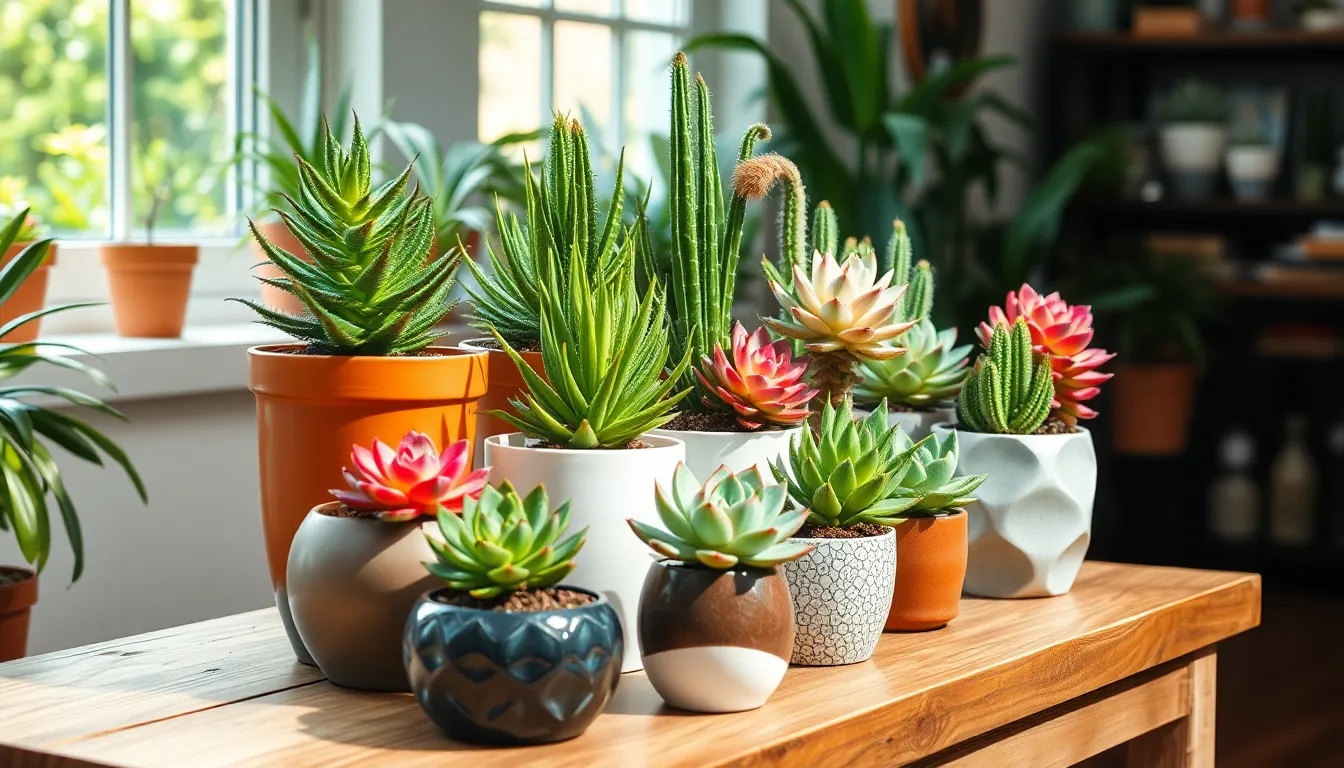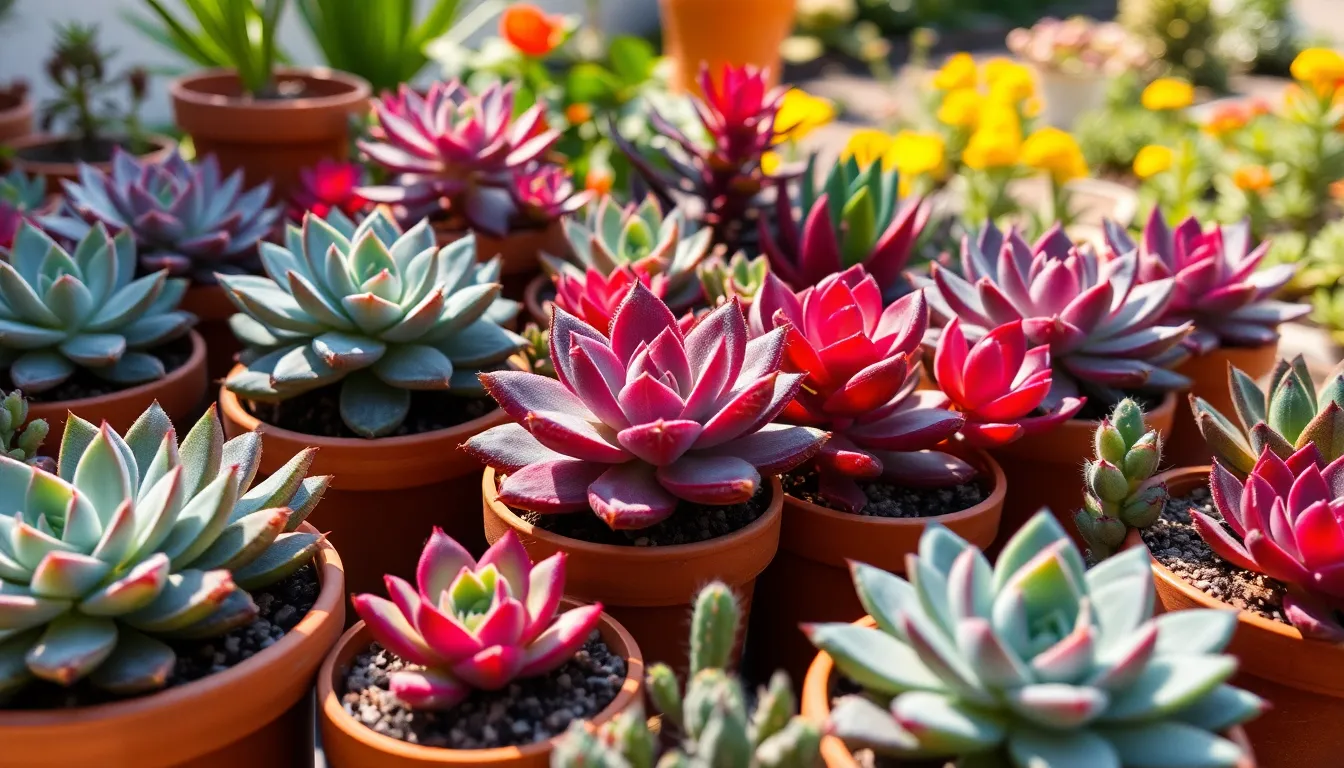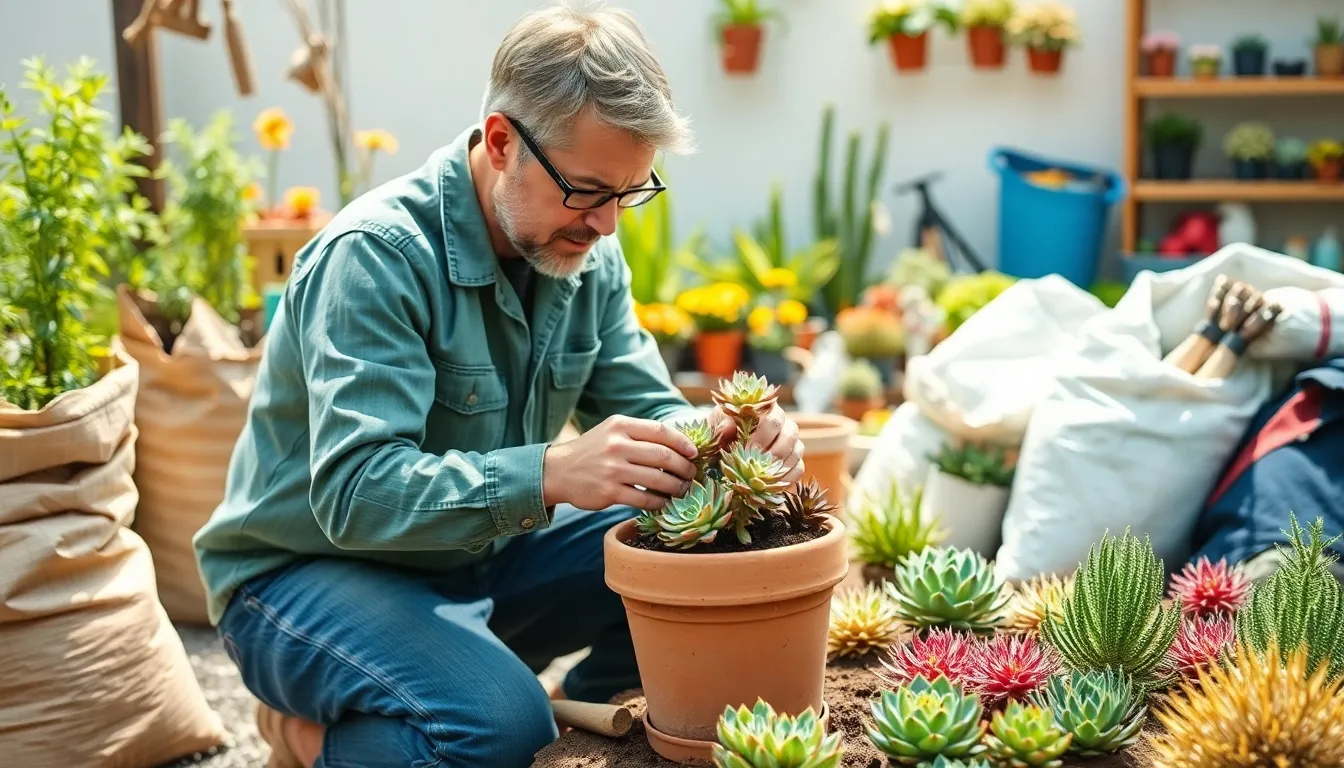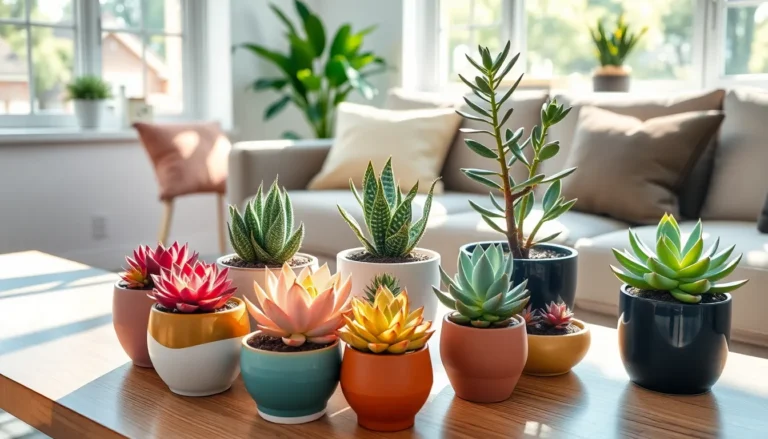The Best Fluffy Pancakes recipe you will fall in love with. Full of tips and tricks to help you make the best pancakes.

Plant Succulents: Your Ultimate Guide to Low-Maintenance Greenery
Succulents are the ultimate low-maintenance companions for anyone looking to add a touch of green to their life without the drama of a high-maintenance plant. These quirky little wonders store water in their leaves, making them the perfect choice for those who might forget to water their plants—no judgment here! With their unique shapes and vibrant colors, succulents can turn any dull corner into a mini oasis, all while requiring minimal effort.
Whether you’re a seasoned plant parent or just getting started, succulents offer an irresistible charm that’s hard to resist. Plus, they’re like the introverts of the plant world—thriving in solitude and never demanding too much attention. So why not dive into the delightful world of succulents? You might just find your new favorite green buddy waiting to brighten your space.
Plant Succulents
Succulents represent a diverse group of plants known for their water-storing capabilities. These plants excel in arid conditions, showcasing unique adaptations that allow them to thrive with minimal care.
Definition of Succulents
Succulents are characterized by thick, fleshy leaves or stems that retain water. This storage mechanism enables them to survive prolonged dry periods. Common examples include aloe vera, jade plant, and echeveria. These plants typically belong to various families, such as Crassulaceae and Aizoaceae. Succulents exhibit a wide array of shapes, sizes, and colors, which contribute to their popularity in home and garden decor.
Types of Succulents
Many types of succulents exist, each with distinct features. Cacti, a well-known subgroup, often display spines instead of leaves. The Aloe genus, known for its medicinal properties, includes the iconic aloe vera. Sempervivum, or hens-and-chicks, showcases rosette-shaped formations that propagate easily. Another popular type is Sedum, famous for its diverse varieties suited for ground covers. Each type serves different aesthetic and functional purposes, appealing to a wide range of gardening enthusiasts.
Planting Succulents


Planting succulents involves selecting the right materials to ensure healthy growth. Proper soil and pot choices play a significant role in a succulent’s success.
Choosing the Right Soil
Selecting the right soil enhances drainage and aeration for succulents. A well-draining mix, such as cactus soil or a blend with perlite, ensures roots don’t sit in water. pH levels of 6 to 7 favor succulent growth. Homemade mixes often combine potting soil, sand, and perlite for optimal results. Some gardeners keep ready-to-use succulent soil on hand for convenience. Checking the soil’s dryness before watering prevents over-saturation, a common mistake for new succulent owners.
Selecting the Appropriate Pot
Choosing the right pot incorporates factors like size and drainage. A pot equal to the root ball’s size encourages healthy growth. Pots featuring drainage holes prevent excess water retention. Materials like clay or terracotta provide breathability, which many succulents thrive on. Color and design can complement the plant’s aesthetic, enhancing visual appeal. Proper spacing between plants further supports their growth, allowing airflow and light access. A thoughtful pot choice ultimately sets the stage for vibrant, healthy succulents.
Care Tips for Plant Succulents
Succulents thrive with proper care, enhancing their impressive features and promoting healthy growth. Following simple care tips can ensure these plants flourish in any environment.
Watering Techniques
Watering requires precision to prevent over-saturation. Allow the soil to dry completely between waterings, typically every 1 to 3 weeks. Apply water directly to the soil, avoiding leaf rot caused by water accumulation on foliage. Ensure pots have drainage holes to facilitate excess water escape. Early mornings or late afternoons provide the best times to water, allowing moisture absorption while reducing evaporation. During winter, water less frequently, as succulents enter dormancy. Monitor the plant for signs of drought stress, such as shriveled leaves or a dull appearance.
Light Requirements
Light exposure significantly impacts succulent health. Bright, indirect sunlight fosters optimal growth, but a few species tolerate direct sunlight. Position plants near south or west-facing windows for 6 hours of daily light. Conversely, insufficient light can result in etiolation, where plants stretch towards the light source. Adjust placement during seasonal changes, as light intensity varies throughout the year. If necessary, consider using grow lights to supplement natural light. Healthy succulents exhibit compact growth with vibrant colors, ensuring a visually appealing presence.
Common Issues with Plant Succulents
Succulents, while typically easy to care for, can still encounter certain issues. Understanding these problems helps maintain their health and appearance.
Pest Problems
Pests like mealybugs, aphids, and spider mites can infest succulents. These pests often appear on leaves or stems and can cause significant damage if left untreated. Regular inspections enable early detection, allowing for timely intervention. Using insecticidal soap or neem oil can effectively eliminate pests, while introducing beneficial insects like ladybugs acts as a natural control method. Keeping plants healthy through proper care reduces the likelihood of pest infestations.
Overwatering vs. Underwatering
Overwatering typically leads to root rot, a common issue for succulents. Signs include yellowing leaves or mushy stems. It’s crucial to allow the soil to dry completely between watering sessions. On the other hand, underwatering results in shriveled, dry leaves. To address this, monitor the soil moisture and adjust watering habits based on light and temperature conditions. Striking a balance between overwatering and underwatering ensures vibrant, thriving plants.




